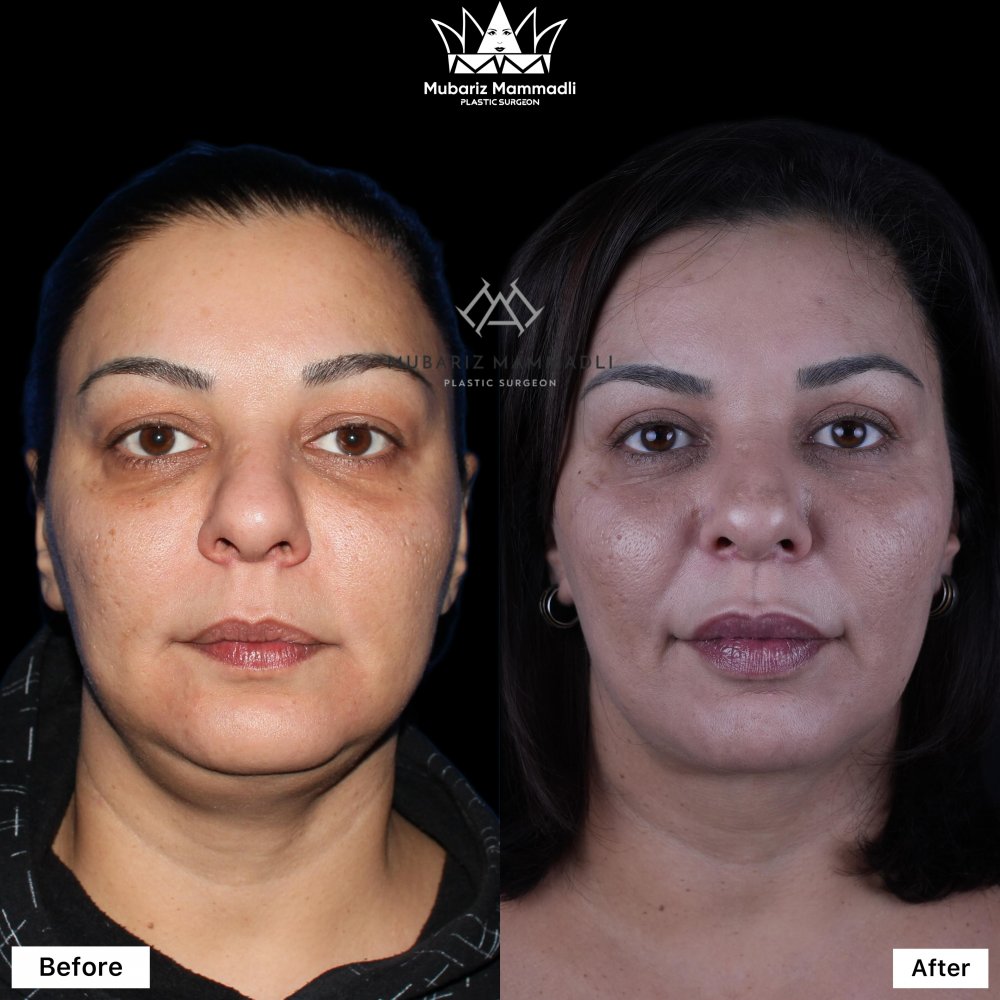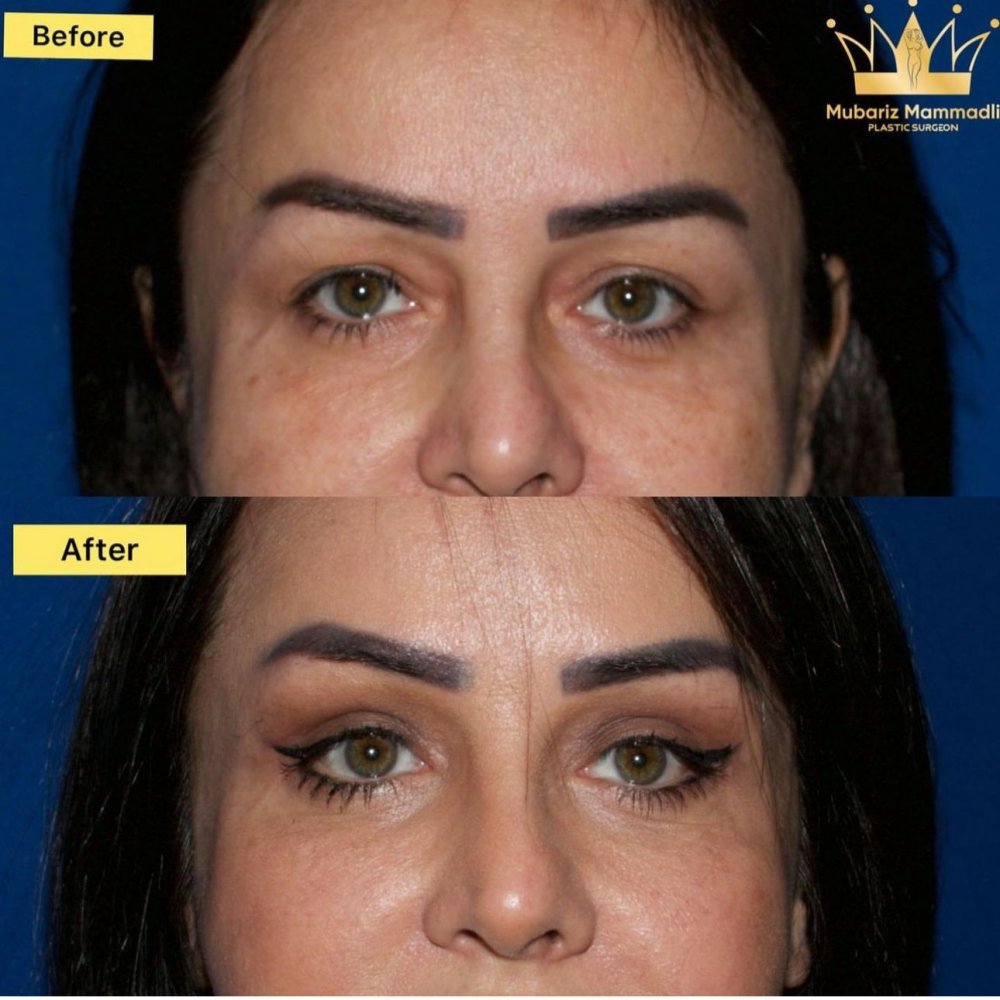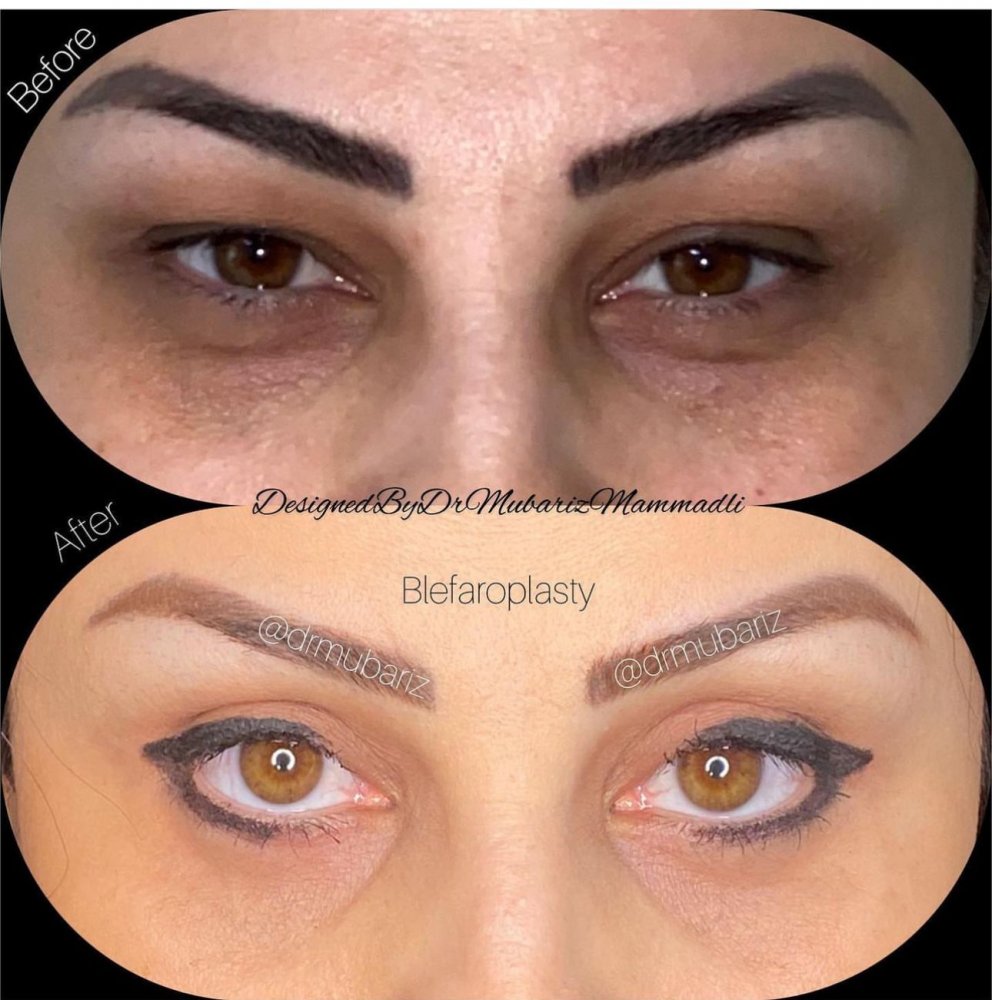Contents
- Michael Jackson Skin Color: The Truth Behind His Transformation
- Bella Hadid Before and After: What Cosmetic Procedures Has She Had?
- Scars After a Deep Plane Facelift
- Non-Surgical Facelift with Morpheus8: Advanced Skin Tightening
- Kesselring’s Lip Surgery ( Direct lip Lift)
- “Preservation Deep Plane Facelift™ by Dr. Mubariz” Natural, long-lasting rejuvenation using the most advanced anatomical techniques.
- From Hidden to Honored: A Neckline That Reflects Your True Self
- Azerbaijani Aesthetic Surgery on the Global Stage-Dr.Mubariz Mammadli
- Neck Lift Surgery cost, before and after, scars & more
What is Blepharoplasty (Eyelid Lift Surgery)?
Blepharoplasty is a surgical procedure designed to remove excess skin from the eyelids, helping you achieve a more youthful and refreshed appearance. In this article, we will explore the various aspects of blepharoplasty and provide you with valuable insights in simple language.
When Can Blepharoplasty Be Done?
As we age, our eyelids may develop excess skin and fat deposits, making us look tired and older than we feel. Blepharoplasty offers a solution to these concerns by significantly improving the appearance of your eyes. This procedure is commonly sought after by middle-aged patients who experience age-related changes such as wrinkles and bags under the eyes. However, it can also be performed at a younger age if there is an anatomical tendency to develop sagging and hernias.

Why Is It Done?
Blepharoplasty addresses a range of aesthetic and functional concerns, including:
- Bags under the eyes
- Fine and deep wrinkles
- Tired look
- Excess skin on the lower eyelids
- Desire to correct eyelid defects
- Desire to change eye shape or shape
- The descent of the corners of the eyes
Moreover, blepharoplasty can also improve vision in older individuals whose sagging upper eyelids obstruct their line of sight.
Correction Methods
Eyelid lift surgery can be performed through either surgical or non-surgical methods, depending on individual cases. The choice of method should be determined by a specialist after careful evaluation.

Non-Surgical Eyelid Lift
Non-surgical eyelid lift procedures are considered painless and non-traumatic alternatives to plastic surgery. These methods are suitable for individuals with minor defects such as shallow wrinkles and small fat deposits. There are two primary non-surgical methods:
- Injection (Needle): Medicinal preparations are injected under the skin to make it smoother and more elastic.
- Device-Assisted: Techniques such as laser, ultrasound, thermal, thermolifting, electro, Raylife, and DROT-therapy are employed.
It’s important to note that non-surgical eyelid lift procedures do not leave scars. The duration of their effects varies from 1 year (needle) to 7 years (laser procedures).

However, if the problem is more severe or the patient is over 50 years old, plastic surgery may be advisable.
Surgical Eyelid Lift (Plastic Surgery)
Plastic surgery involves the surgical removal of excess fat and skin. Incisions are made in natural folds to minimize visible scarring. Tear removal in the lower eyelid area can be performed without incisions through the mucous membrane of the eye.
Contraindications
Non-surgical Eyelid Lift:
- Pregnancy
- Malignant derivatives
- Pacemaker implantation
- Infectious and autoimmune diseases
- Hemophilia
- Inflammatory skin diseases around the eyes
- Diabetes
Surgical Eyelid Lift:
- Blood clotting problems
- Anticoagulant medication usage
- Previous heart attack or stroke
- Retinal detachment
- Heart problems
- Diabetes
- Oncological tumors
- AIDS
- Systemic diseases
- Chronic kidney or liver failure
- Menstruation
- Pregnancy and lactation
Post-operative Recovery Period
After the operation, the plastic surgeon sets a certain recovery period. Swelling is observed in the first days after the operation, which is a natural reaction of the body. Applying a cold compress can help reduce swelling.
To ensure quick rehabilitation after blepharoplasty, patients should follow certain rules:
- Avoid stress on the eyes and eyelids, such as reading, using computers or TVs, wearing contact lenses, and exposure to bright light.
- Give up smoking and alcohol to reduce swelling.
- Sleep only on your back using a high pillow.
- Replace contact lenses with glasses for one month.
- Try not to bend your head.
- Protect your eyelids and eyes from external influences such as wind, bright light, cosmetics, and soap.
- Wash your face with chamomile tea.
- Avoid baths and saunas.
- Perform special tasks for the eye with care.
- Do not bend over or engage in strenuous activities like biking, jogging, weight lifting, or aerobic exercise for 2 weeks or until your doctor says it is okay.
- Do not wear eye makeup for 2 weeks. You may also want to avoid face cream or lotion.
- Ask your doctor when it is okay to drive.
The rehabilitation period determined by the plastic surgeon typically takes about 7 to 10 days. You can return to work after 2 weeks. The result is known immediately after the operation, but the full effect will be visible after a month. Following proper eyelid skin care rules can help maintain the results for an extended period.